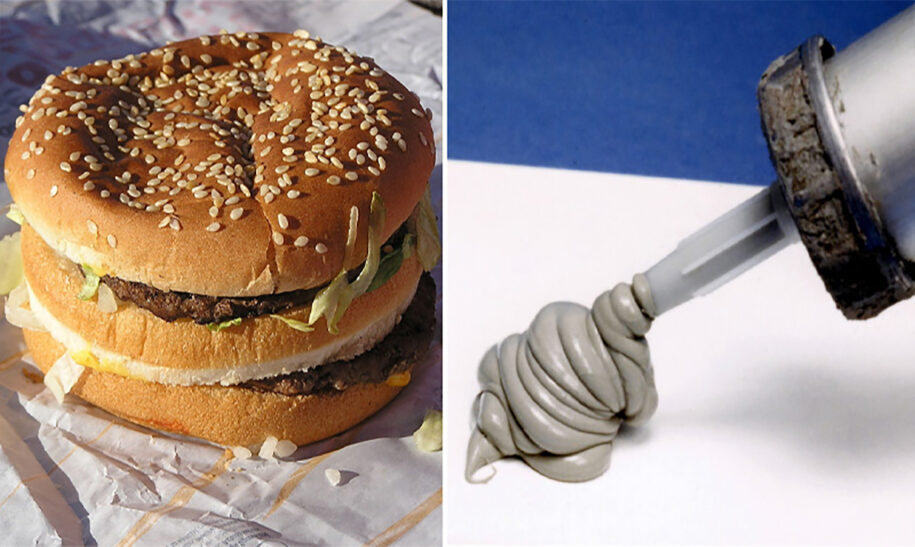10 Horrifying Ingredients That Prove McDonald’s Is Not Fit For Consumption
Today processed foods surround us and they are causing a terrible decrease in the overall health of the public. Even brands that claim to have organic products are using GMOs and other additives that make us sick!
Processed foods are terrible for our health, and it is difficult to refrain from because it is hidden around us everywhere. There have been hundreds of different scandals and truth uncoverings about ‘organic’ brands using processing, additives, GMO’s, preservatives, texturants, colorants, and the whole nine yards. Even more dangerous than organic foods lying about their produce, is fast food.
Fast food is essentially poison for your body. It causes the buildup of plaque in your arteries, heart disease, obesity, diabetes, you name it. Fast food is so common nowadays because it is fast, easy, and quite tasty. Although the tastiness, you have to remember that the taste was first made by a scientist in a lab somewhere; not naturally or in a kitchen like it should’ve been. Mcdonald’s is one of the most popular fast food chains and the most infamous. They use ingredients that are detrimental to human health and well-being. You’ll never eat it again after you see these 10 ingredients in Mcdonald’s food.
Silicon Oil
Silicon oil, or dimethylpolysiloxane, is a dangerous chemically made substance that has been decreased in breast implants because of safety concerns. It is the synthetic material that makes up silly putty, caulking, contact lenses, and lubricants. Mcdonald’s uses an alarming amount of silicon oil, especially in their chicken nuggets. As if any amount is safe for consumption.
Ammonium Sulfate
Ammonium sulfate is a salt that is commonly used as a flame retardant and fertilizer. It is also known for being a component of Monsanto’s Roundup herbicide. It causes irritation of the gastrointestinal tract, diarrhea, hormone disruption, and nausea.
TBHQ
Better known as TBHQ, Tertiary butylhydroquinone is yet another famous McDonald’s ingredient that should never be consumed by any living thing. It can also be found in different cosmetic products along with 18 different items from Mcdonald’s menu. The FDA has classified TBHQ as a totally safe chemical for human consumption – however, long term use can cause stomach cancer, ADHD symptoms, damaged DNA, and death.
Cysteine-L
Cysteine L is an amino acid synthesized from human hair or duck feathers. Industries and corporations use it to soften pastries, bread, and meat. Consumption of cysteine L can cause vomiting, constipation, diarrhea, rashes, headaches, fever, low blood pressure, drowsiness, and liver issues.
Prescription Drugs
Researchers from John Hopkins University found high levels of antidepressants and other banned pharmaceutical drugs in chicken products.
Propylene Glycol
Propylene glycol is most famously an ingredient in antifreeze. However, it can also be found in McDonald’s food, cigarettes, and E-cigarettes. It damages the central nervous system, so it’s not to be taken lightly.
Carminic Acid
Fast food brands use carminic acid to give food a more appealing color. They classify it as a natural dye, but the FDA requires it to be clearly identified because it can lead to serious allergic reactions.
Dimethylpolysiloxane
You can find this chemical in popular cooking oils. Mcdonald’s uses it in the production of their chicken nuggets, fillet-o-fish, and french fries. It is also used in contact lenses, silly putty, shampoos, caulking, conditioners, cosmetics, breast implants, and heat resistant tiles and polishes.
Silicon Dioxide
Silicon dioxide is also known as industrial sand or silica. It is used in glass blowing, the production of cement, and optical fibers. In fast food, it is used to prevent sauces and meats from clumping together. Industrial workers are forced to wear a mask when handling this chemical…
Cellulose
Cellulose is a natural byproduct derived from wood pulp. You wouldn’t say it’s necessarily a good ingredient for food though. This is added to almost all fast food products to add volume.


